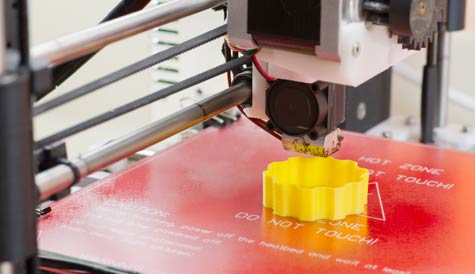2015 Tech Trends: A Critical Crossroad for IT It’s not hard to find stories about the promise of 3D printing. It is an undeniably exciting frontier that seems to be the meeting of science and science fiction. That doesn’t mean, however, that it is not without challenges; they are significant. This week, Gartner released a […]

2015 Tech Trends: A Critical Crossroad for IT

It’s not hard to find stories about the promise of 3D printing. It is an undeniably exciting frontier that seems to be the meeting of science and science fiction. That doesn’t mean, however, that it is not without challenges; they are significant.
This week, Gartner released a report that found that this cutting-edge field is being slowed down by a familiar challenge: cost of entry. The firm spoke to 330 employees with organizations with 100 or more employees that are using, or plan to use, 3D printing. The research identified benefits that organizations using 3D printing are realizing. But it also pointed to a big holdup: Gartner found that 60 percent cite high start-up costs as a factor in slowing the use of 3D printing.
Generating sufficient investment is a big deal. Motley Fool’s story, “Why Warren Buffett Won’t Buy 3D Printing Stocks,” is a bit misleading. It has no quote or paraphrase directly from Buffett on 3D. Rather, it digs into Buffett’s investing philosophy and makes the point that it is antithetical to dumping money into the roiling, confused and still young 3D printing sector. Of course, there is a vast amount of money beyond Berkshire Hathaway. But the points that writer Patrick Morris makes suggest that investors soon will be demanding that the sector start paying back on its lofty promise.
Another easily overlooked issue is the protection of trade secrets. Bryan Vogel at Inside 3DP offers interesting insight. The two approaches to protecting ideas are patent law and trade secret law. Vogel says that protecting ideas through trade secrets is less expensive and legally demanding than doing so through patent enforcement. Vogel suggests that 3D printing may be a particular active area for trade secret litigation because people in the field change jobs often and there may be close calls between what is proper and what is not.

There are technical challenges as well. Rakesh Sharma at Benzinga refers to three identified in a recent report by PricewaterhouseCoopers: increasing speed, combining materials and reducing the failure rate. It seems clear, however, that each of these will fade over time.
3D printing is quite possibly the most important developing technology. The things it can do – from delivering food to arid lands to revolutionizing medical treatments – are astounding. But it is a field that faces challenges that should not be overlooked.
Carl Weinschenk covers telecom for IT Business Edge. He writes about wireless technology, disaster recovery/business continuity, cellular services, the Internet of Things, machine-to-machine communications and other emerging technologies and platforms. He also covers net neutrality and related regulatory issues. Weinschenk has written about the phone companies, cable operators and related companies for decades and is senior editor of Broadband Technology Report. He can be reached at cweinsch@optonline.net and via twitter at @DailyMusicBrk.
Carl Weinschenk
Carl Weinschenk
Carl Weinschenk is a long-time IT and telecom journalist. His coverage areas include the IoT, artificial intelligence, artificial intelligence, drones, 3D printing LTE and 5G, SDN, NFV, net neutrality, municipal broadband, unified communications and business continuity/disaster recovery. Weinschenk has written about wireless and phone companies, cable operators and their vendor ecosystems. He also has written about alternative energy and runs a website, The Daily Music Break, as a hobby.












